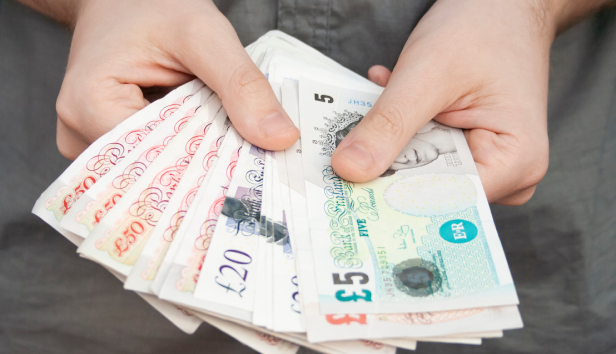
The price of gold has hit a series of all-time highs, catching the eye of savers and seasoned investors alike. The ‘yellow metal’ is glittering more brightly than it has for years, leading many to wonder whether it's time to get on board.
This surge is being fuelled by global instability (gold always does well in conditions like this) and huge purchases from the world's central banks, leading many to see gold as an essential defensive asset. But does a rising price mean you should jump in, or is there a risk of buying at the top? We’ll explore whether gold is a golden opportunity, or a gamble best avoided.
What’s on this page?
Gold’s appeal centres on its role as a portfolio diversifier and store of value during uncertain times.
Chris Beauchamp, chief market analyst at IG, explains: “Unlike shares or bonds, gold often moves independently from traditional assets, providing crucial protection when correlations spike during market stress.”
When stock markets fall, the price of gold often moves in the opposite direction. So, having some of your portfolio invested in gold can add diversification, help reduce risk and make your investments more resilient.
Beauchamp adds: “For investors sitting on cash earning minimal returns, gold offers a middle ground between volatile stocks and low-yielding savings accounts.”
Laith Khalaf, head of investment analysis at AJ Bell, points out that investing in gold can inflation-proof your finances too. “Gold is durable, has a history of being money since time immemorial, and is difficult and expensive to produce. So it can be seen as a store of value at a time when inflation is eroding the purchasing power of money.”
According to Bullionvault, the top reasons for investing in precious metals are inflation protection and diversification.In its December 2024 survey, 30% of investors cited diversification and 34% cited inflation.
Bear in mind though that although it has risen in price in recent years, there is no guarantee that gold will keep pace with inflation, and it can fall in value.
The yellow metal has caught the eye of over-50s in particular. The precious metals marketplace BullionVault told Saga Money that the number of over-50s investing in gold for the first time using its platform has soared 88% since the pandemic compared to the previous five years.
That’s more than twice the growth rate among the under-50s cohort, which has only increased 43%. Adrian Ash, director of research at the firm, says the rise is due to older savers having more money that needs protecting, and gold’s ability to “help defend what you’ve got − something which the pandemic, inflation, [wars and conflict] all make more urgent”.
Since 1970, the annual return from gold has varied wildly from a 113% return (in 1979) to a 29% loss (2013), according to Bullionvault. Ash summarises: “For UK investors, it lost 0.7% every year on average during the ‘long boom’ of the 1980s and ’90s. But since the turn of the millennium, gold in sterling terms has risen by 11.7% a year on average, far outrunning the stock market, house prices and bonds.”
Gold rose 11.7% in 2022, 7.8% in 2023, and 28.3% in 2024. This compares to a 0.3% annual return for UK shares in 2022, 7.9% in 2023 and 9.5% in 2024. This year continues the pattern, with the gold price rising by around 20% so far this year (at the time of publication) already for UK investors.
This means it has outperformed other asset classes, although it is currently down from the all-time high of £2610 per oz set on April 22 this year. The price has been helped by conflict between Russia and Ukraine, and Israel and Iran, plus the volatility of President Trump’s second term.
Gold is often seen as a safe haven and a way to protect your wealth during times of trouble. However, Khalaf warns that gold is volatile and can drop sharply.
“Investors in their 50s and above might be attracted to gold because of its ‘safe haven’ status. This comes from the fact that people tend to flock to the precious metal in times of financial stress, but this doesn’t mean gold isn’t volatile. It is, and steep losses can be incurred.
“Between 1980 and 1982, the gold price fell by over 60%, and between 2011 and 2015, it fell by around 45%. From its peak in 1980, the gold price fell by 33% over the next 20 years, and it took a further seven years to recover. That’s a long period in the wilderness.”
Gold doesn’t produce any income. This is in contrast to shareholders who may receive a dividend, and savers who get interest on their cash.
John Moore, wealth manager at RBC Brewin Dolphin, says: “There is no interest, no dividend yield and no fundamental value to benchmark gold against, so there can be periods of uncertainty. Before you invest, you should consider whether you are comfortable with this.”
Khalaf echoes this, adding: “Gold itself offers no yield, has limited industrial use and comes with a cost of ownership, in the form of storage and insurance, so many investors won’t embrace the metal, especially when they can get returns from cash in the bank that might currently exceed inflation.”
If you’re looking for a risk-free investment, gold isn’t the answer, as we’ve already highlighted with the performance figures. Nor is it necessarily the answer if you're looking for growth. Beauchamp says: “Growth-focused investors may find gold too conservative, particularly during bull markets when shares deliver superior returns.”
Instead, the yellow metal works best as a small allocation in a wider portfolio.
Khalaf adds: “Gold shouldn’t be seen as a cash proxy, nor should it be held in isolation. But it can be held alongside cash, bonds and shares as part of a diversified portfolio of assets that perform well at different times.”

Gold is usually part of your estate for inheritance tax purposes. The possible exemption is that gold held within a self-invested personal pension (more on this below) would currently be exempt from inheritance tax, but there are plans to change this from April 2027.
If you do want to pass gold on to your family, there are options to do this in your lifetime, in much the same way as you can choose to pass on cash.
Giving gold coins, such as gold sovereigns, as Christmas or birthday presents can help distribute wealth within the £3,000-a-year gifting allowance. Or you could do it using the regular gifts out of income allowance.
Gold can also be given as a marriage gift to children, grandchildren or others without triggering an inheritance tax liability.
There are several ways that people invest in gold, including buying gold bars and investing in a fund that tracks the gold price.
Moore says: “The issues with physical gold are practical ones – what if it’s lost or stolen, where do you store it and what are the associated costs? A fund can be easier as this is administered for you, typically with an exchange traded product provider.”
Here are the pros and cons of four different approaches:
Pros
Cons
Pros
Cons
Pros
Cons
Pros
Cons


With our Stocks & Shares ISA and General Investment Accounts. Capital at risk.

Beginner's guide to investment types: Shares, funds, ETFs, and trusts demystified

Explore the essentials of UK inheritance tax, including nil rate bands, gifting rules & other exemptions.

Card and mobile payments dominate, but cash is making a comeback. Understand why and what it means for a cashless future.

Regularly giving away your spare cash can help with inheritance tax planning, but there are strict rules to follow.
